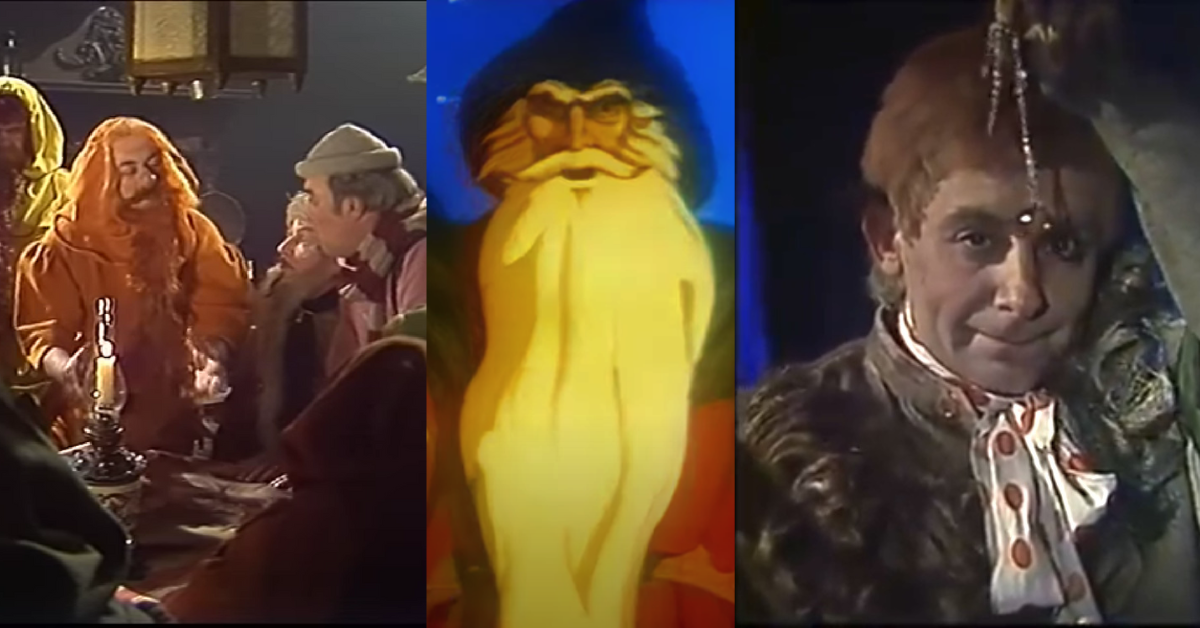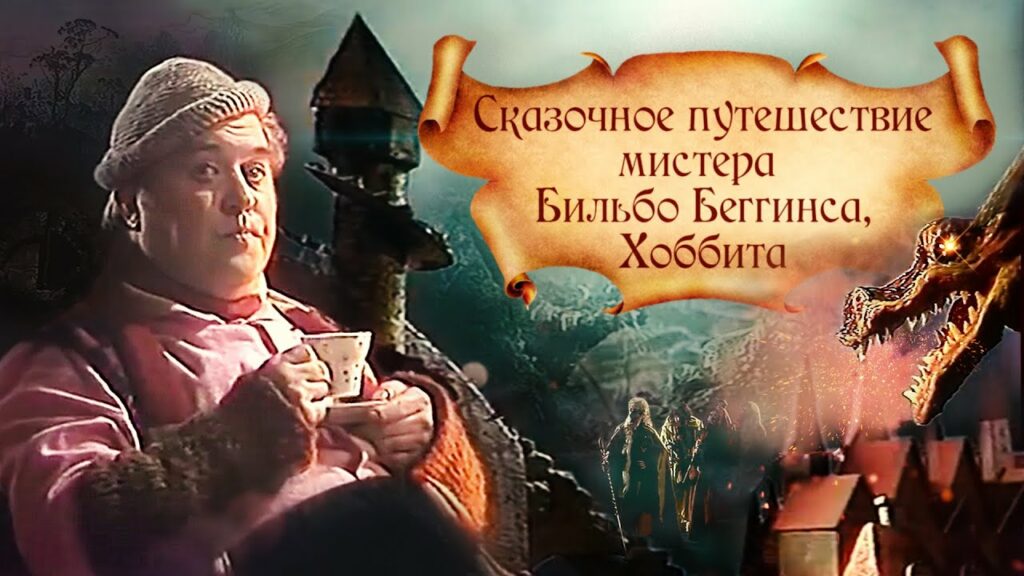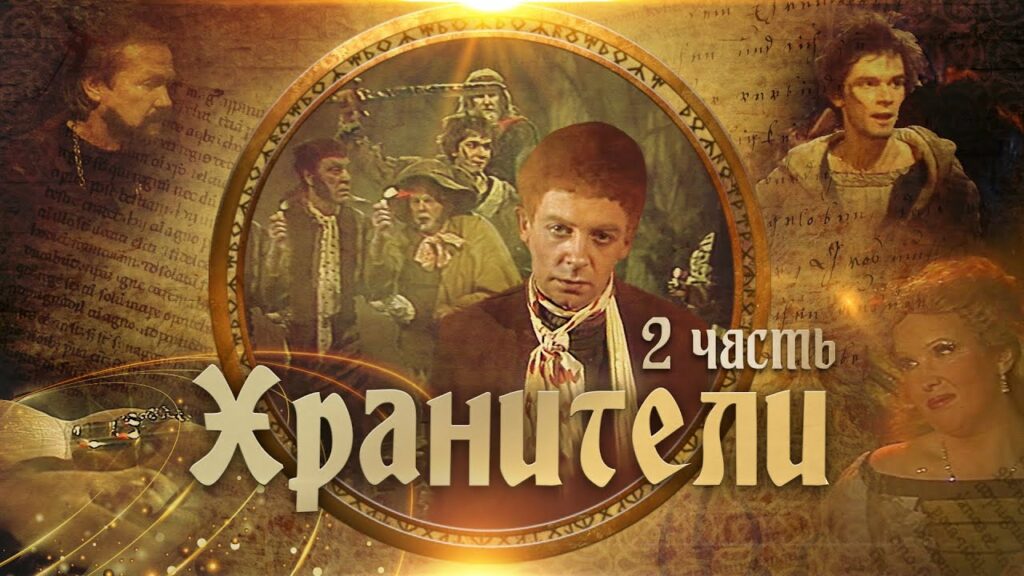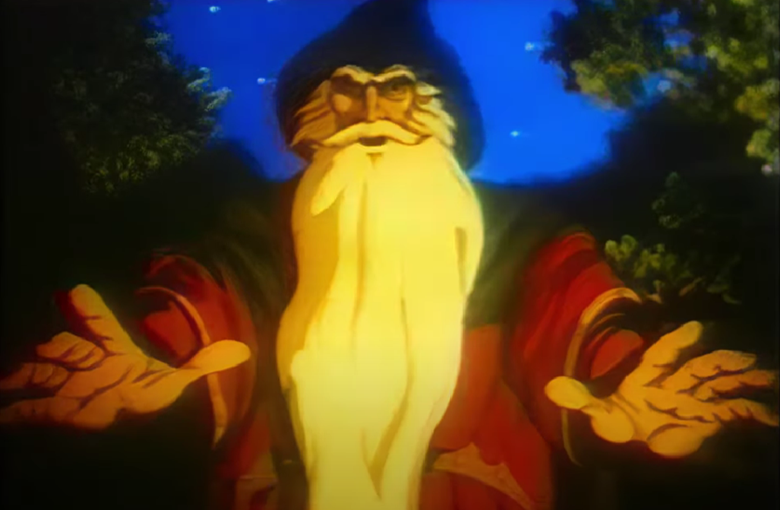Tolkien Before Jackson Part 5: The Russian Adaptations

Russia had a particularly passionate interest in The Lord of the Rings even before a full translation of the book became available in the 1990s. There were three adaptions (completed and otherwise) of his works, which will be discussed here chronologically.

The Fabulous Journey of Mr. Bilbo Baggins, the Hobbit (1985, directed by Vladimir Latyshev)
Eight years after Rankin-Bass’ take on The Hobbit, Leningrad TV released a live-action adaptation for children. The TV film has been released online by 5TV, which owns Leningrad TV’s assets, though it only provides Russian subtitles. A variety of copies are available elsewhere online with English subtitles. It’s developed a notorious reputation.
The limited budget meant much of the action occurs on stages with either painted or bluescreen backdrops. Some of these effects have aged poorly—such as the mechanical puppet used for Smaug. Still, as Open Culture observes, “it does retain a kind of handcrafted charm.” The movie’s props and puppetry lack the skill of something like The Dark Crystal or Labyrinth but remain refreshing for anyone tired of CGI.
There’s also an attempt to capture the story’s music with two (more bizarre than graceful) dancing sequences utilizing ballet dancers. Like the singing sequences in the Rankin-Bass Return of the King, they feel more like songs shoehorned into the plot than something naturally arising from the material.
The one element that works well is the Gollum scene. Rather than sinister, this film presents an overly theatrical camp Gollum, chewing the scenery for all its worth. It’s off-putting for viewers raised on Andy Serkis’ sinister portrayal in Jackson’s trilogy, but not necessarily bad. We don’t generally consider Gollum a comic figure, but his fawning attitude and quasi-effete speech pattern (“My love… my precious…”) can be humorous. Without knowing his backstory and his plans to kill Frodo and Sam, Gollum could easily be comic relief. Thus, this campy Gollum is akin to watching Adam West’s Batman after watching Christian Bale’s Batman: so much silliness, but genuinely appealing.

The Keepers (1991, directed by Natalya Serebryakova)
Better known by its Russian title Khraniteli, The Keepers (as in “The Keepers of the Ring”) was a two-part miniseries, also released on Lengingrad TV. 5TV has released both parts of the miniseries online, with English subtitles.
Like the Swedish miniseries, The Keepers focuses on events from The Fellowship of the Ring. Part 1 runs 50 minutes from Bilbo’s party to Frodo getting lost in the Barrow-Downs. Part 2 runs 60 minutes, from the hobbits escaping the Barrow-wights to Frodo going with Sam to Mordor.
The presentation is a step up from The Fabulous Journey of Mr. Bilbo Baggins, but not more than a step. The script is fair to middling with a few interesting flourishes—several times characters talk about summer and winter as if trying to develop that into a theme (summer replacing winter, as good overcomes evil). Boromir’s confrontation with Frodo is reset in an apple garden, with snake-and-Eve overtones as Boromir helps Frodo pluck an apple. The rest of the script feels like a dry reading of the book.
There are also some jarring attempts to give the story a sort of children’s show atmosphere. Tom Bombadil is more or less depicted like a children’s TV host—with boisterous energy, always smiling, even talking to the camera in some scenes like a Russian Mr. Rogers.
The children’s show atmosphere continues with various scenes cutting to a narrator (a bespectacled man dressed like a Quaker) who sits in a room and talks to the audience as he reads aloud from the story. The moments where the camera switches from showing a scene to showing the narrator feels more natural than in The Fabulous Journey of Mr. Bilbo Baggins. However, occasionally the camera will cut to the narrator, and he says nothing—as if watching the audience, which makes him seem creepy.
The same better-but-not-good quality applies to everything else. The soundtrack sounds nicer than the music used for the weird dancing scenes in The Fabulous Journey. However, the music is mostly electronic tracks that don’t fit the images or tone. The special effects do a good job of making the hobbits tiny compared to Tom Bombadil, but look terrible when used for fantasy backgrounds (Moria’s mines, etc.). Perhaps realizing the limited tech budget, the script omits many big set pieces. No climbing up Weathertop. No river decimating the Black Riders. No Balrog battle (the one scene that really feels odd by its omission, as it means Gandalf disappears and the characters talk as if he died in the fighting).
The one area where The Keepers genuinely excels is its editing. As mentioned earlier regarding the narrator, the camera occasionally intercuts to another scene and then back to the main narrative. The technique doesn’t work with the narrator, but it does in smaller moments. As Gandalf and Bilbo talk about the ring, the camera cuts to close-up footage of Bilbo’s hands fondling the ring. The same happens whenever Frodo is concerned or talking about the ring—creating a little suspense each time. Other times, the camera intercuts from the heroes to the Black Riders. There’s even a moderately clever sequence where Frodo is being transported to Rivendell, and the footage intercuts him, the Black Riders, and a rushing waterfall.
The editing isn’t the best example of slicing-and-dicing footage. For one thing, the footage doesn’t have the cinematography or lighting that a director like Tony Scott would use to make their scenes look great even when little was happening. However, the editing does make the scenes look more interesting than they deserve. Special effects matter in fantasy films, but clever editing and visual tricks can make up for many deficiencies.

Treasures under the Mountain (1991, unreleased, directed by Roman Mitrofanov)
Russian animations studio Argus planned but never finished an animated film based on The Hobbit. The finished material, a six-minute prologue, has appeared in various places online, sometimes with English subtitles.
Fortunately, the six minutes are an entire, well-realized scene. It begins with a candle on a table; then a narrator talks about the need to remember the past as a map unfurls. The map becomes the Mountain and Dale, and a scene shows Dale’s golden times: dwarves and men dancing and feasting.
Smaug—looking very much like a dragon from Asian literature illustrations—materializes and lays waste to the village. The narrator sings a sad song about the carnage but notes footprints in the snow leading from the Mountain.
The scene switches to a table holding a candle and map, with Gandalf and the dwarves talking. Gandalf advises the dwarves to get a fourteenth member. Following Gandalf’s instructions to find someone with a particular mark on his door, the dwarves walk off, and Gandalf blows out the candle. Opening credits appear, then the footage ends.
It’s impossible to tell from an unfinished film what the final product would have been like. Some fans may get a general idea by looking at Argus’ other projects—the studio went on to release at least eight other projects in the late 1990s to early 2000s, mostly based on fairytales.
However, the footage suggests that Treasures Under the Mountain would have been the best Hobbit adaptation up to that point. Some of its animation techniques are limited—in the Dale scenes, frames are reused to make characters move like clockwork figures. Yet the animation comes across as charming rather than cheap. The backdrops look beautiful, reminiscent of Golden Age Disney animation.
The way the prologue begins and ends with the candle suggests a well-written script—and one that would have solved a structural problem. Tolkien begins his story by giving readers no information about the dwarves and their quest, delaying the reveal as long as he can (after the dwarves have eaten all of Bilbo’s food).
Tolkien’s delayed reveal creates a comic scene, but also a long scene that filmmakers have consistently struggled to adapt. Rankin-Bass condenses the scene thoroughly: the dwarves appear all together shortly after Gandalf appears, sing their song and tell Bilbo their story without sitting down to dinner with him. The Fabolous Journey of Mr. Bilbo Baggins follows the scene fairly closely… and as a result, it’s 20 minutes into a 70-minute movie before the company leaves Bag End.
Jackson’s The Hobbit: An Unexpected Journey attempts to resolve this problem with a battle-heavy prologue showing the dwarf kingdom’s demise before transitioning to the Bag End scenes. After that, it follows the dinner scene closely—leading reviewers like Mark Kermode to argue that the movie drags.
Treasures Under the Mountain apparently had a script that resolved the issue. It covers the important backstory in under six minutes, quickly establishing why the dwarves must recruit Bilbo. What the filmmakers planned to do in the next scene is impossible to say, short of contacting Argus to see if they wrote a script and archived it. However, the prologue’s economy suggests their story wasn’t going to dawdle.
Come back next week when we discuss the 1993 Finnish miniseries of The Lord of the Rings.

